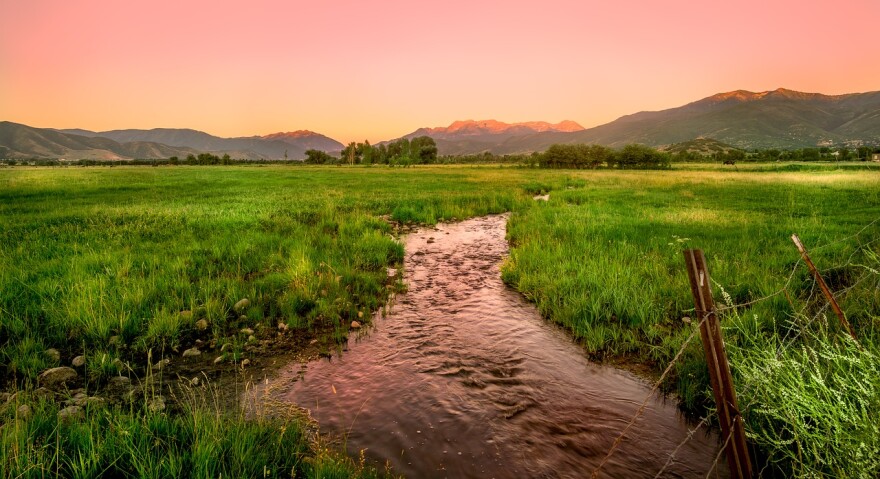At age 69, I am not satisfied unless I am learning more about the nature around me. My home is in the Timberline Creek area, about 10 miles south of the Bridger Mountains. There is a local backroad that skirts the edge of an old beaver pond where I walk several times a week. I love this place so much! The things that draw me to learn more are so abundant there!
Tracks of predators like mountain lion and black bear thrill me when I find them. Moose, elk, and deer browse the hawthorns and aspens, and the pond is seasonally home to Sandhill Cranes, ducks, and geese. Songbirds nest and sing in the willows each summer. I have even seen brook trout flickering along the shallow places of the pond.
Recently, I have been thinking about the food chain that sustains the wildlife here. Where does it begin? When did it begin? What if I looked more deeply than what I can see with my eye?
I want to learn about the microbiome of this wonderful area.
Across the road from the pond there is a shallow pool created by a year-round warm spring seep. I bring my field microscope, a stool, and a small table to a pullover area along the road. Beginning with some samples of moss gathered from the seep, I peer through the eyepiece to see cliffs and canyons of the moss itself. At first it seems that is all to see but as I change the focus, and shift the glass dish a bit on the microscope stage - left, right, up, down - I begin to catch a shadow whipping quickly across my field of view. A little more focus, and I begin to see a slender, wormlike shape - perhaps…a nematode? Nematodes are the most abundant animal on earth. A 2019 study made the astonishing discovery that four out of every five animals are nematodes. Holy smokes! I also see what appears to be the shell of a larva, a relatively gigantic thing that floats, immobile, in this “microscape.” Having learned in my research that some nematodes prey on mosquito larvae, I wonder, am I seeing the remains of the nematode’s latest meal?
I continue to seek other forms to try to identify. Long transparent tubes with green spirals are easy to look at because they are not moving. Are these algae? A transparent sphere that encloses several smaller spheres seems to climb along one of those tubes. Can this be a colony of bacteria? Another creature darts in and out of my field of view. Its shape reminds me of a shrimp. The head has one red dot in the center and there are two antennae like structures flaring out from the head like antlers. Later, I search a bit to identify this. An image of a Copepod, a small aquatic crustacean, is a good match. I learn that Copepods feed on phytoplankton…and a search for images of freshwater phytoplankton shows me an image that looks remarkably like that transparent sphere! It is called an oocystis, a type of green algae.
Whew! I am learning that just one drop of pond water is irresistibly inviting me to go deeper. I have so many more questions! As I gaze at the shallows and deeper places of the pond, I wonder if the microbiome changes with depth of the water? Just today I’ve noticed how autumn has dried the leaves of the willows and cast ice on the pond. How does the microbiome survive the winter? When the willows leaf out again in the spring, what would I find in the soil with my field microscope?
I’ve learned how seasonal changes affect the birds and mammals of Timberline Creek, but how do they affect the microscopic creatures that live here? I will stay busy this year, looking for answers.
Today’s Field Note was written by Roxanna McLaughlin in the Field Notes Writing Workshop at the Montana Natural History Center. I’m Allison De Jong for Field Notes, brought to you by the Montana Natural History Center, providing natural history education for schools and the public throughout Montana. To find out about upcoming events and programs at the Center, call 327.0405, or visit our website at MontanaNaturalist.org.





